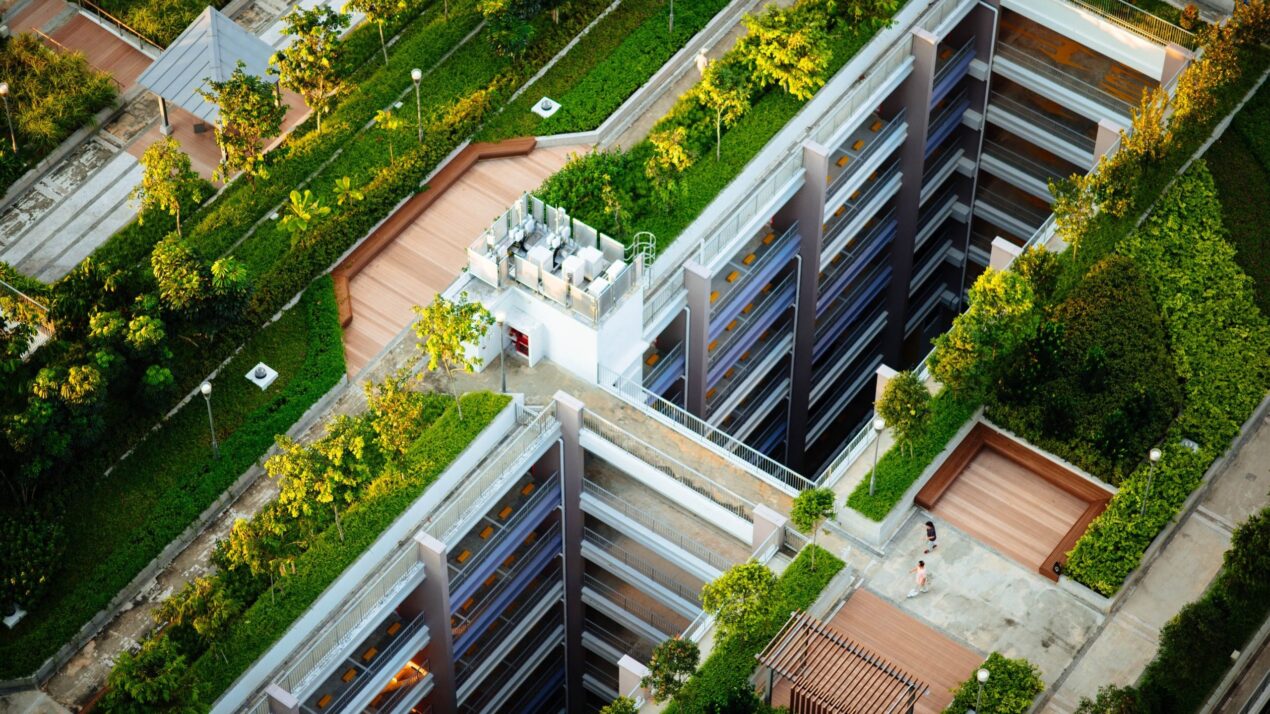
Green roofs
Incentive

Summary
Green roofs cool the surrounding air and reduce building heat through a layer of vegetation or other plants. Green roofs can also serve as additional green space. There are two main types of green roofs: intensive and extensive.
Implementation
Incentivize installation of green roofs through expedited permitting, tax credits, zoning bonuses, and stormwater credits or energy discounts.
Considerations for Use
Green roofs need sufficient structural support and do not work on steep-sloped roofs. Green roofs require maintenance and upkeep every year. Roofs that are open to the public require safety precautions. Intensive green roofs provide more co-benefits (such as stormwater management) are much heavier than extensive roofs and require more structural support, irrigation, and fertilization as well as additional maintenance. Green roofs are generally more feasible and cost-effective in new construction versus retrofits. Given the costs required to install and maintain green roofs, requirements to install them must be carefully considered.
Overview
Climate:
Hot/Humid, TemperatePolicy Levers:
IncentiveFinancial and non-financial incentives to encourage stakeholders to implement heat risk reduction and preparedness solutions, including rebates, tax credits, expedited permitting, development/zoning bonuses, and more.Trigger Points:
City planning processesIncludes city initiatives such as the development of climate action plan, pathway to zero-energy, master plan, transit plan, energy mapping etc.Introducing new or updated zoning/codesIncludes codes, zoning requirements or by-laws pertaining to urban planning and building construction activity.Intervention Types:
Green/natural InfrastructureSectors:
Buildings
Case Studies
Impact
Target Beneficiaries:
Heat-vulnerable communities, Property owners, ResidentsPhase of Impact:
Risk reduction and mitigationMetrics:
Decrease in building temperature, Energy savings, GHG emission decrease, Number of permits and total area of completed and in progress projects, Stormwater runoff reduction
Implementation
Intervention Scale:
BuildingAuthority and Governance:
City governmentImplementation Timeline:
Medium-term (3-9 Years)Implementation Stakeholders:
City government, Private developers, Property owners and managersFunding Sources:
Grants and philanthropy, Private investment, Public investmentCapacity to Act:
High, MediumBenefits
Cost-Benefit:
HighPublic Good:
MediumGHG Reduction:
MediumCo-benefits (Climate/Environmental):
Improve stormwater management, Preserve biodiversity, Reduce air and water pollutionCo-benefits (Social/Economic):
Build social cohesion, Improve human health, Increase property values, Save on utilities
